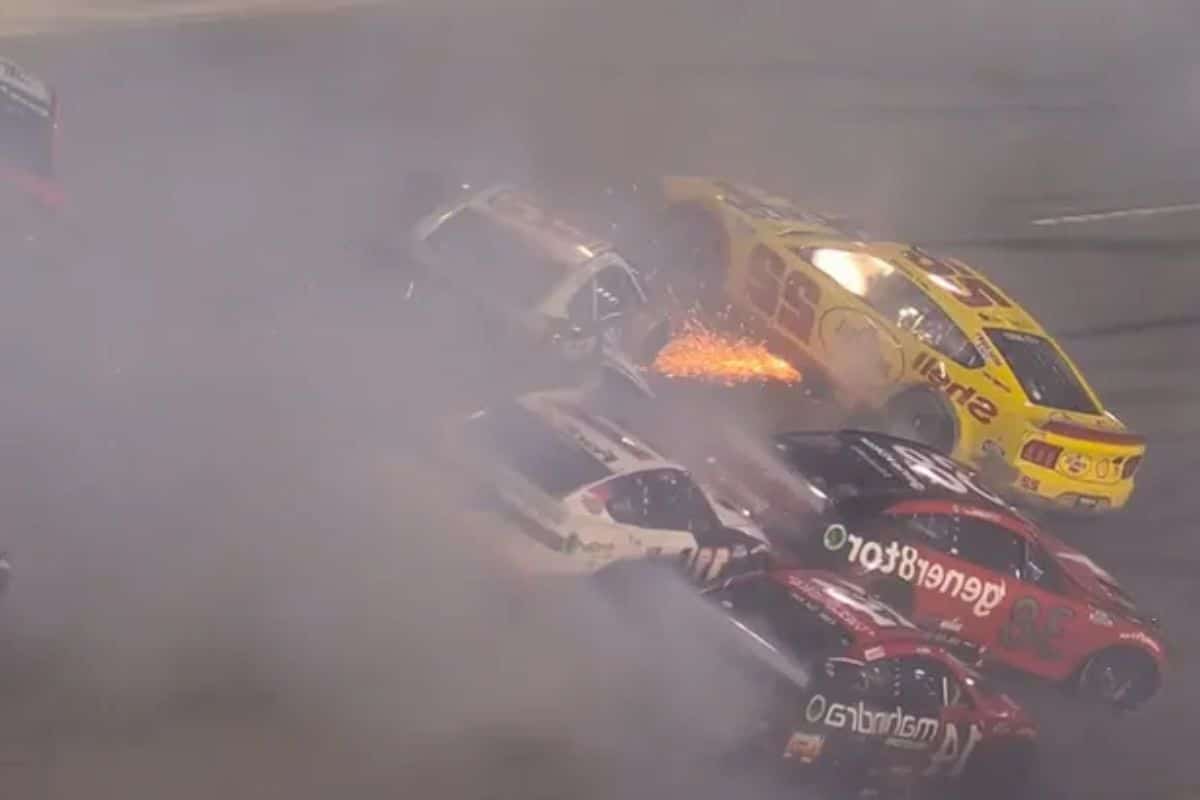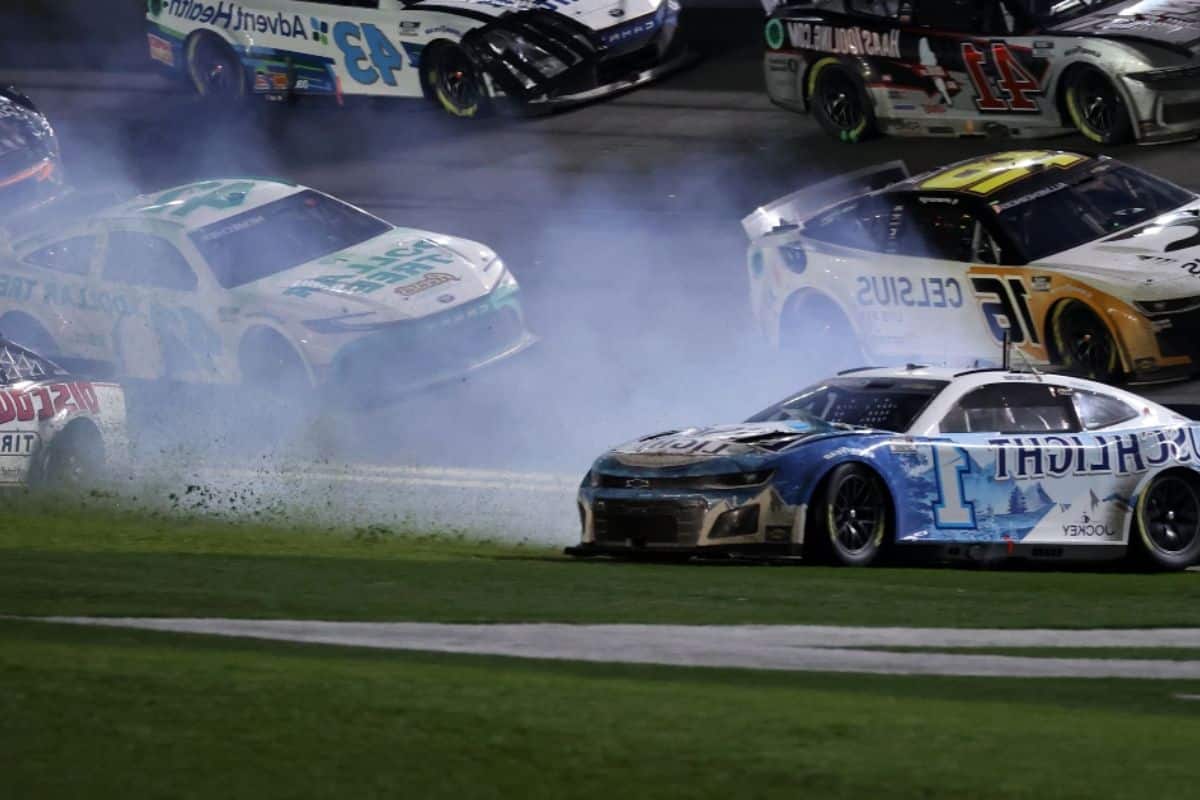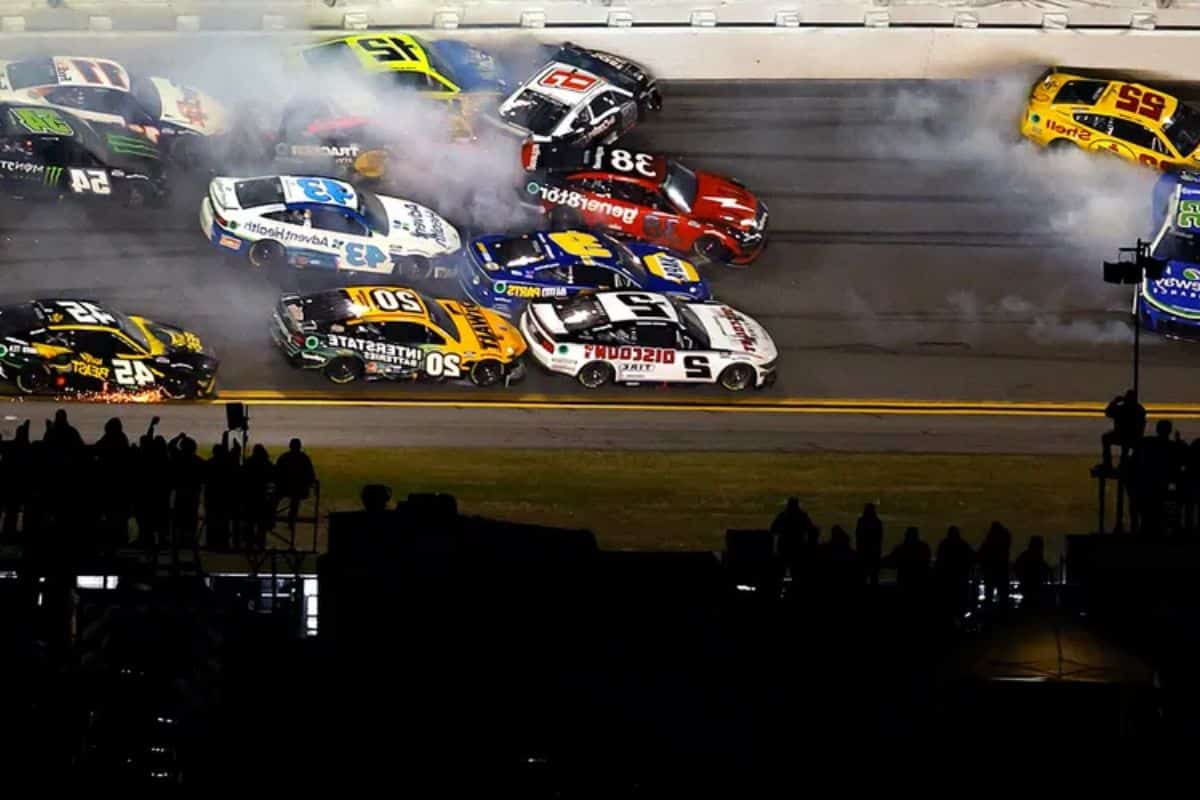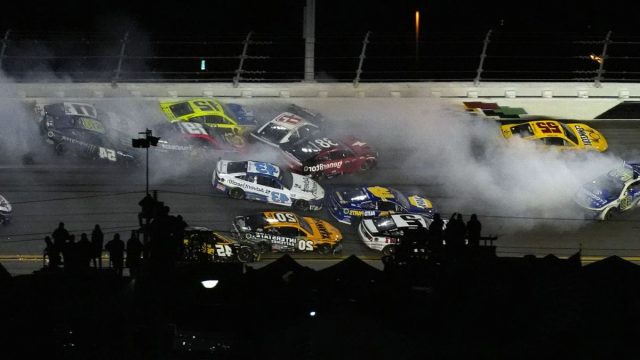Daytona 500 Massive Wrecks: The recent string of massive wrecks at Daytona International Speedway has brought into question the safety and future direction of NASCAR. With drivers pushing the limits of speed and competition, the risks have never been higher.
As the sport grapples with the aftermath of these incidents, fans and industry insiders alike are left wondering: what will NASCAR’s next move be to address these challenges and ensure the well-being of its drivers while maintaining the excitement and thrill that has defined the sport for decades?
Introduction and Overview
In light of the recent high number of crashes at Daytona, an in-depth examination of the implications and potential strategies for NASCAR’s future direction is warranted. The alarming rate of incidents involving approximately 85 out of 114 cars during the recent racing weekend at Daytona, spanning across multiple series, including the prestigious Daytona 500, Xfinity Series, Truck Series, and possibly the ARCA Series, has sparked significant concerns within the racing community. This surge in crashes not only raises questions about the safety of drivers but also calls into question the overall quality and sustainability of racing, particularly on high-banked tracks like Daytona and Talladega.
The frequency of these wrecks highlights a pressing need for NASCAR to evaluate its current regulations, track designs, car specifications, and safety measures. As fans, drivers, and officials grapple with the aftermath of these incidents, there is a growing consensus that proactive steps must be taken to address the root causes of these crashes and ensure a safer, more competitive environment for all involved in the sport. NASCAR stands at a critical juncture where strategic decisions and innovative solutions are imperative for shaping its future trajectory.

Historical Context and Rule Changes
Amidst the ongoing concerns surrounding the high crash rate at Daytona and Talladega, understanding the historical context of rule changes in NASCAR provides valuable insights into the evolution of safety measures and on-track regulations. NASCAR has a legacy of adapting rules to enhance competition while addressing safety concerns, a practice that gained momentum following Bobby Allison’s harrowing crash at Talladega. The aftermath of such incidents led to the implementation of various safety measures over the years, aimed at reducing the risks drivers face on these high-speed tracks.
One significant aspect of NASCAR’s rule changes revolves around drafting, a technique crucial for success at Daytona and Talladega. Different drafting rules have been introduced to regulate the aerodynamics of the cars, influencing how drivers maneuver around the tracks and interact with one another. However, each adjustment in drafting rules has also brought forth its own challenges, sometimes resulting in frightening crashes that have not only impacted drivers but also posed risks to spectators. NASCAR continues to navigate this delicate balance between competition and safety, seeking ways to mitigate the dangers while maintaining the thrill of racing on these iconic tracks.

Current Issues and Driver Perspectives
With the resurgence of the tandem draft technique in NASCAR racing, driver perspectives on the current issues highlight the precarious nature of this style of competition.
- Drivers express concerns over the increased risks associated with aggressive pushing in the tandem draft.
- The recent 22-car crash during the Daytona 500 serves as a stark reminder of the potential dangers involved in this style of racing.
- Despite the acceptance of inevitable crashes in the closing laps, there is a growing unease among drivers regarding NASCAR’s reluctance to implement significant rule changes to address the risks posed by the tandem draft.
These viewpoints underscore the fine line drivers navigate between competitive edge and safety in NASCAR racing.
As drivers grapple with the consequences of pushing the limits in pursuit of victory, the sport finds itself at a critical juncture where balancing speed and safety becomes paramount.
The current issues and driver perspectives shed light on the complexities inherent in NASCAR’s decision-making processes and the challenges of ensuring a thrilling yet secure racing environment.

News in Brief
Our Reader’s Queries
Q. What happens to old NASCAR cars?
A. Jeff Gordon’s statement underscores the commitment to sustainability in NASCAR, emphasizing that everything in a race car can be reused, making it 100-percent recyclable. Gordon mentions his experience of shredding “hundreds of race cars” and sending the remains to a mini-mill for the process of refining them back into raw steel. This recycling effort contributes to environmental sustainability and resource conservation. Gordon notes that steel is valued at seven cents a pound as scrap, while aluminum, another material commonly used in race cars, can fetch a higher value at 40 cents a pound, further highlighting the economic and ecological benefits of recycling in the racing industry
Q. What is the most cars wrecked in a NASCAR race?
A. The infamous crackup took place on the fourth turn of the first lap, occurring less than two minutes into the race. Widely regarded as the worst wreck in NASCAR history, a staggering 37 cars were involved in the incident. Fortunately, there were no fatalities resulting from the crash, but some of the drivers involved sustained injuries. The severity of the wreck underscored the inherent risks and challenges in the high-speed and competitive environment of NASCAR racing.
Q. Why does Dodge not run in NASCAR anymore?
A. Ultimately, in 2013, Dodge opted not to make a half-hearted attempt and instead chose to withdraw from NASCAR. The decision was not driven by political factors, corporate intrigue, or disapproval from their European parent company. Rather, it was attributed to the unavailability of a suitable partnership in the racing series. This departure from NASCAR was acknowledged as an undeniable blow to the sport, reflecting the challenges and complexities involved in maintaining a competitive presence in such a high-profile racing environment.
Q. Are NASCAR cars reliable?
A. In stark contrast to production car engines, which are designed to endure over 100,000 miles of use, NASCAR race car engines are engineered for a single race, such as the 500-mile Daytona 500. Although the same version of an engine may be utilized throughout an entire season, it undergoes thorough rebuilding after each race to ensure peak performance and reliability for the next event. This approach emphasizes the rigorous demands and specialized requirements of NASCAR racing, where engines are meticulously maintained and optimized for maximum performance within the confines of a single race distance.
ALSO READ: Daytona 500 Controversial Decision: What’s the Buzz?
